Image credit to Paizo Publishing
Paizo Publishing, the creative minds behind the Pathfinder role-playing game, has done it again. This time around, the publishing titan has released a new edition for Pathfinder players to enjoy.
Of course, a lot has changed within Pathfinder 2nd Edition. Whether it’s the core goblin race or the revamped paladin class that has snagged your eye, Paizo has found a way to nearly guarantee that there is some kind of change in the new edition for every veteran player to get excited about.
Without further delay, here is a list of the top five changes within Pathfinder 2nd Edition that are worth getting excited over.
1. Reinvigorated Skill Check System

The skill system in Pathfinder has been completely reimagined for the game’s second edition. The first radical change you will notice when playing second edition is that there are far fewer skills available to choose from.
Overall, Paizo has done quite a lot to trim the fat off of the skill list. In total, there are 17 skills for players to now take advantage of. Among them, the newly introduced Occultism skill allows players to recall information concerning mysticism and the otherwise supernatural. A full list of the game’s skills may be viewed below.
Acrobatics | Arcana | Athletics | Crafting | Deception | Diplomacy | Intimidation | Lore | Medicine | Nature | Occultism | Performance | Religion | Society | Stealth | Survival | Thievery
With that in mind, there has been an even more radical change to the skill system that will likely catch veteran Pathfinder players off guard. There is now a dedicated branch of skill feats. And, players can now improve their skills beyond simply trained and untrained.
Traditionally, players needed to invest a skill point within a skill of their choosing in order to become trained in that skill. Being trained in a skill allowed the player the ability to use more of the skill’s features, as well as offered a hefty skill check bonus. While Pathfinder first edition offered a few additional features of skill customization, the basis for the system relied heavily on skill ranks. Now, that has changed.
Now, however, players can go beyond this system. As you level up, you will be given the opportunity to improve skills of your choice by leveling them up from expert to legendary. By upgrading your skill level in this fashion, you will be able to meet the often demanding prerequisites tied to the more powerful skill feats.
Every even numbered level you earn will grant you another opportunity to select a new skill feat. You can check out the skill feats here.
Overall, the skill system in Pathfinder 2nd Edition has evolved past the often overcompensating numerical system offered within the game’s original edition. Now learning how to truly master your skills will require a more nuanced, but often more rewarding approach.
2. New Champion Class
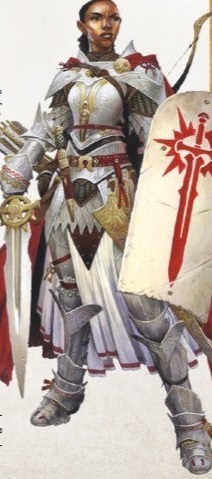
Every class has received a significant overhaul within the second edition. For starters, the Gunslinger class is now gone. Beyond that, the classic paladin class that many veteran Pathfinder players have come to know and love has since been rebranded as the Champion. But, don’t worry. The Champion is an excellent addition to the Pathfinder system.
The Champion shares many traits with the all-too-familiar Paladin class. However, the Champion class is a little more versatile.
Perfect for nearly any player looking to multiclass, the Champion class can take on the role of the tank, physical damage dealer or even as a support. If you are curious how Paizo has managed to improve upon the game’s original classes, the Champion is a great place to start.
3. Simpler Action Economy

One of the major issues many Pathfinder 1st Edition players have voiced concerns with over the years is the game’s action economy system. In order to complete a turn in combat, a player has to balance their movement turn, action, free action, swift action and the list keeps going. The system could be confusing at times. But, not anymore.
Second edition Pathfinder now functions off of a three action economy system. Would you like to move your character three times in a row? Now you can. Want to brutalize your opponent with three consecutive attacks? Now it’s possible.
Overall, the new action economy is short, sweet and to the point. This is a big win for Pathfinder players.
4. Revised Combat Feats
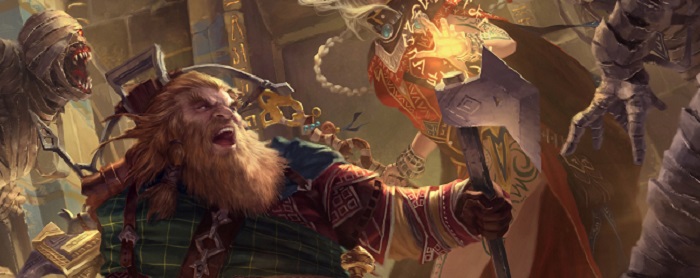
There is now a myriad of feats to choose from in Pathfinder. Luckily, the creative minds over at Paizo have figured out a way to control the chaos.
As you level within Pathfinder’s second edition, you will earn opportunities to learn skill feats, ancestry feats, general feats and class feats. All of these feats are chosen at different time, so you don’t have to worry about choosing from a pool of hundreds of feats every time you gain a level.
When it comes to combat feats, Paizo has rebranded them as class feats. Consequently, each combat feat is now tailor made for each class. This offers a much larger variety of customization to the player, as well as a better collection of truly effective options to choose from. For example, you can check out the barbarian’s class feats here.
5. Goblins Are Here to Stay
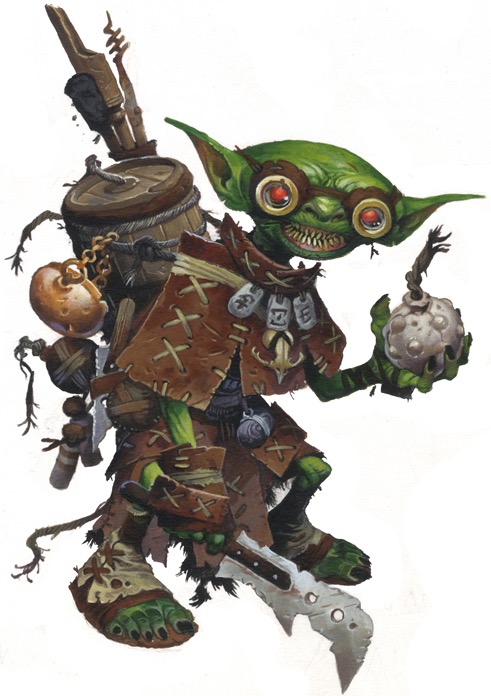
The races in Pathfinder’s second edition have been rebranded as ancestries, though many of their features are the same. Now, however, there is a dedicated branch of feats for customizing your ancestry as you continue to level your character.
The list of available races has slightly diminished, however. The half-orc and half-elf races are no longer available as core classes, though you can select them through your heritage options. However, the goblin has now been added as one of the base races for second addition.
The goblin ancestry will offer players a unique experience, as the world of Golarion will likely treat quite differently than any of the other ancestries. You can learn more about the goblin ancestry here.

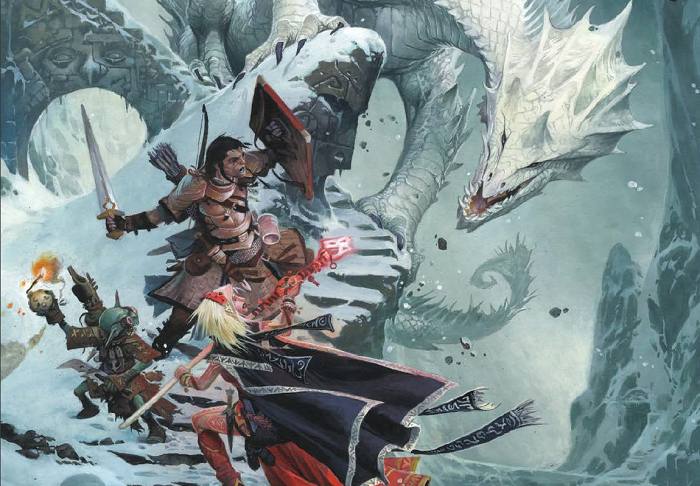
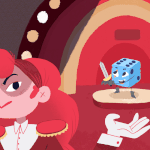




5 Comments
Wow this article is quite misguided / misleading in spots, particularly in its representation of 1e. I haven’t played 5e personally, but I get the feeling that the discussion of 1e has been conflated with 5e concepts.
In no particular order:
1) Skills in 1e. You weren’t just trained or untrained in 1e. Yes, those were the main thresholds with names, but the “overcompensatory” numbers had a lot of customizability within distribution. Though, yes, it could certainly get complicated. But beyond that there were also skill unlocks, occult skill onlocks, and feats / class features that provided new uses to skills. So the statement that 1e’s skill system is just a difference between “trained and untrained” is reductionist and false.
2) Paladins aren’t gone, they remain a subset of champion. If anything that isn’t removing a class, it is adding two more and branding them together, much like the 1e rogue and ninja.
3) Feats. “There is now a myriad of feats to choose from…” Uh have you seen the number of feats in 1e? The amount was approaching the ridiculous. Yes, you *choose* more feats in 2e because there are no longer static class features upon leveling, instead classes have feat lists. But there were way more feats available in 1e than in 2e right now.
4) Character variety in 2e. The article says that the new class feats provide more variety to characters than 1e. I’m not complaining about the new system, but technically the fact that all feats aside from skill feats are now locked behind races / classes actually reduces variety in that players who want to do certain styles of gameplay must approach their builds from the same race or class, whereas in 1e there was more (albeit certainly not complete!) freedom between races and classes to choose feats. Thankfully dedications stand in as a way to pick class feats from other classes, but it still isn’t quite as flexible as 1e was where many classes often counted as taking levels in another for the purpose of prerequisites. I’m not saying 2e is bad because of feat locking, just that you can’t blatantly state that there is more variety in 2e than 1e. Particularly since this is merely a single rulebook worth of options. One rulebook can not possibly afford the character variety found within a 10 year publishing run.
5) Bonus actions. What? Ok I haven’t played but even I know that that is a 5e and not PF 1e thing.
6) You also can’t say that the gunslinger is gone from the system. It merely hasn’t been added yet. Guns and gunslingers weren’t in the 1e core rulebook, so why do you have the expectation that if they aren’t in 2e’s core, they are excised from the system entirely? Particularly when the developers want to make 2e even more entrenched in Golarion’s lore and there are whole nations with guns in them? I also happen to know that, early on during the playtest, an interview with the developers stated they do have plans to add guns to 2e, but that is something you can’t add to the core rulebook as it could contradict with what is seen as the fantasy “norm” for most ttrpg games. They want to add it later so gms have the choice to use or reject the use of guns within their games, and it is much harder to reject the core rules of a system.
Now I’m not trying to be overly critical of 2e here, merely critical of the straw man arguments set up in this article. 1e has enough legitimate problems with it that there is no need to imply false ones just to start hype about 2e.
This was written on mobile so I apologize for any grammar issues I’ve missed.
Hello Decicio,
I’m sorry that you are not pleased with my representation of Pathfinder’s new edition within this article. That being said, I am happy to see how clearly passionate of a Pathfinder player you are!
I see your point about my wording concerning gunslingers and paladins. Yes, the gunslinger class will almost certainly be making a return. That being said, I felt it was necessary to point out that the class is not available within the core rulebook. While hardcore players will likely have expected its absence within the new core rulebook, this is not necessarily true among more casual fans of the game.
The paladin class exist within the game as a subclass. You are correct.
I hope you continue to enjoy playing Pathfinder, Decicio. Have a great day.
Thanks for the reply! I appreciate that you took my comments seriously and replied so congenially. I do want to stress that my analysis wasn’t an attack on you as a person or your writing ability, I merely felt that aspects of the systems were misleading and in an article which compares system, a truthful representation on both sides is needed to accurately see where both have weaknesses or merits. To your credit, your insight into what is in 2e to get excited about is wonderful and highlights some of the amazing changes. I just felt that the descriptions of 1e in particular weren’t setting up a fair comparison.
I will admit that I’m a bit surprised that my comment was marked as spam. . . but I assume you didn’t personally have anything to do with that.
Hey again!
Thank you for the kind words, Decicio. I’m looking into why your comment was marked as spam. It most certainly should not be. It appears to be a technical error, so we will have it fixed as soon as possible.
I hope you enjoy the new Pathfinder edition!
I’m sorry about the spam flag. Disqus automatically did it. Should be approved now. Thanks for your comments!